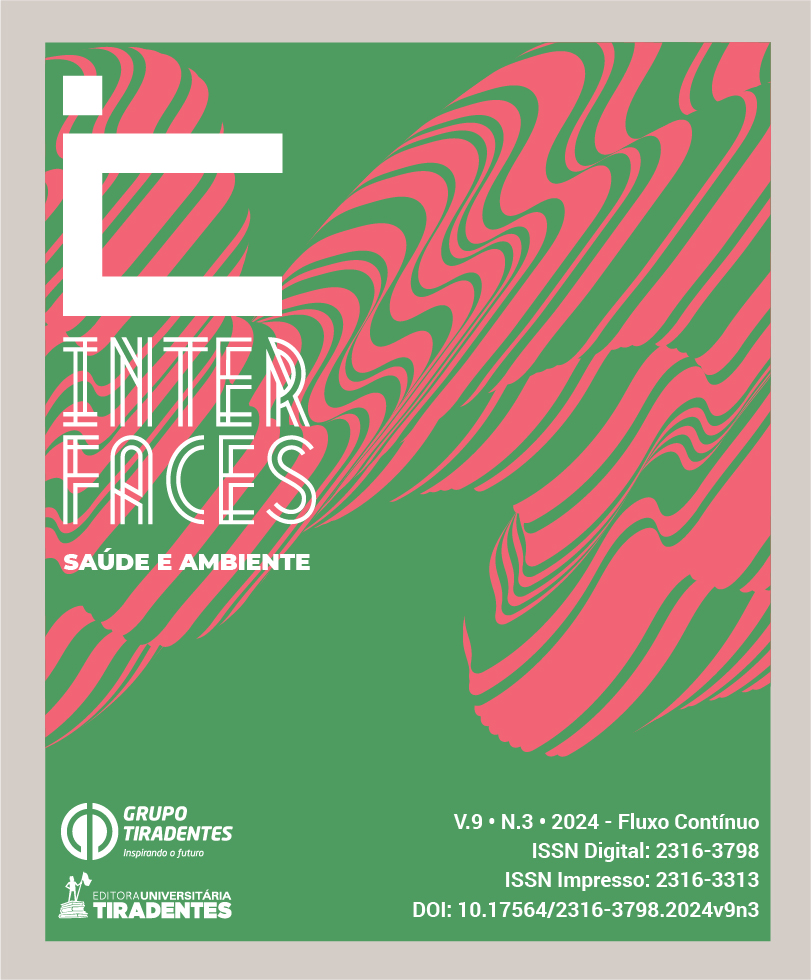DELINEAMENTO EXPERIMENTAL DE FOTOPROTETOR FÍSICO (TiO2), OBTIDO PELO MÉTODO DE EMULSIFICAÇÃO ESPONTÂNEA, COM ASPECTO TRANSPARENTE À PELE
DOI:
https://doi.org/10.17564/2316-3798.2024v9n3p495-508Publicado
Downloads
Downloads
Edição
Seção
Licença
Copyright (c) 2024 Interfaces Científicas - Saúde e Ambiente

Este trabalho está licenciado sob uma licença Creative Commons Attribution-NonCommercial 4.0 International License.
Autores que publicam nesta revista concordam com os seguintes termos:
a. Autores mantêm os direitos autorais e concedem à revista o direito de primeira publicação, com o trabalho simultaneamente licenciado sob a Licença Creative Commons Attribution que permite o compartilhamento do trabalho com reconhecimento da autoria e publicação inicial nesta revista.
b. Autores têm permissão e são estimulados a distribuir seu trabalho on-line (ex.: em repositórios institucionais ou na sua página pessoal), já que isso pode gerar aumento o impacto e a citação do trabalho publicado (Veja O Efeito do Acesso Livre).
Resumo
Os efeitos da radiação ultravioleta (UVR) na pele, são influenciados pela intensidade da fonte, tempo de exposição, comprimento de onda da UVR e pigmentação da pele. A radiação solar UVA, UVB atingem a superfície terrestre, sendo crucial para a produção de pré-vitamina D3 na pele humana. Exposição solar pode levar a eritema e queimaduras solares (UVB) e fotoenvelhecimento (UVA), além de aumentar o risco de câncer de pele, reconhecido como agente cancerígeno pela IARC.Os tumores malignos de pele, incluindo melanoma, carcinoma basocelular e espinocelular, são associados principalmente à exposição à radiação UV. Os casos de melanoma aumentaram significativamente de 1975 a 2016, indicando a importância da prevenção.Protetores solares são ferramentas fundamentais para evitar danos causados pela radiação UV. Existem dois tipos: químicos e físicos. Os químicos absorvem a energia UV, enquanto os físicos refletem ou dispersam a radiação. No entanto, os bloqueadores químicos têm sido associados a preocupações ambientais e de saúde, incluindo toxicidade para os corais e suspeitas de desregulação endócrina e carcinogenicidade. Foram obtidas pelo método de emulsificação espontânea seis formulações (F1, F2, F3, F4, F5 e F6) de protetor solar físico usando dióxido de titânio micronizado, apresentando-se a F5 como a formulação mais estável. A F5, apresentou-se transparente na pele. A caracterização mostrou um diâmetro médio de partícula de 273 ± 4,89nm e índice de polidispersão 0,25 ± 0,12, demonstrando homogeneidade na formulação e capacidade reduzida de agregação. A avaliação do fator de proteção solar (FPS) in vitro revelou valor de FPS - 28, considerado elevado para reflexão da radiação UV, atribuído à presença de partículas inorgânicas refletivas e à menor concentração de dióxido de titânio.




















